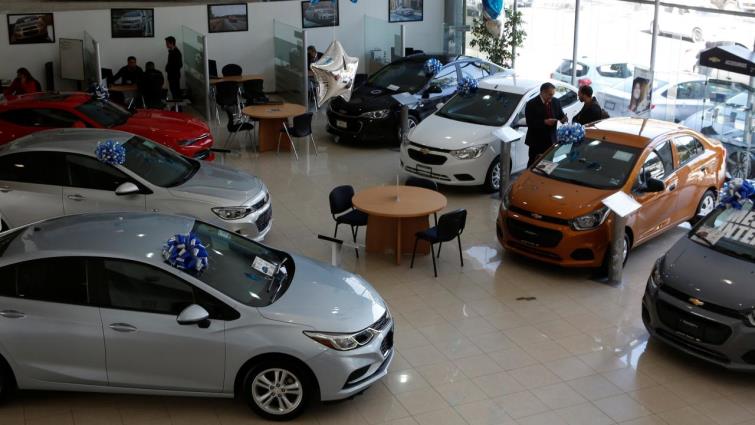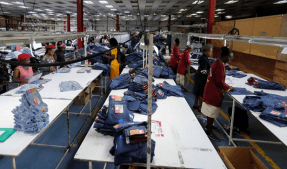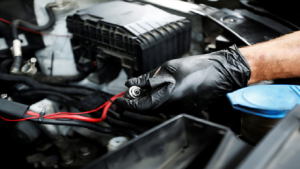The festive season is almost upon us, bringing with it the promise of a bonus or 13th cheque for many South African employees.
Anyone who gets a 13th cheque or tax refund in this current economic climate is very lucky indeed and it must be noted that these recipients need to spend their cash wisely.
Some lucky employees can hardly wait for their bonus so as to treat themselves with the purchase of that something special which can range from a holiday, renovating your house, buying those cool gadgets to that dream car, just to name a few.
After a house, a car is the most important purchase made by most consumers. For many people a vehicle is one of the most expensive assets that they will purchase and own and is probably one of the biggest decisions they’ll make during their lives. It can be a very daunting experience. It is thus important to take the time to do the necessary checks beforehand. It could save the buyer much inconvenience and a lot of money!
It is natural to think about the joys of starting the New Year in your dream car when your bank account is filled with an end of the year bonus, but in the same vein buying a car can be a nightmare.
Consumers in the market for a used car should be on high alert against unscrupulous sellers who are ready to pounce on their hard earned cash and take them for a ride. It is a sad reality that there are thousands of cars on South African roads which were either hijacked or stolen, and consumers need to vigilant against being sold a stolen or hijacked car through private transaction or from some unscrupulous dealers.
There are more than 1.5 million stolen and hijacked motor vehicles that have never been recovered. Some of these motor vehicles have been exported, some chopped for parts and some have reached the end of their lives without been recovered. Many however have been cloned and are in South Africa, being used on our public roads by mostly unaware, innocent owners.
An estimated more than 20 000 unrecovered motor vehicles, valued at more than R4 billion, are entering the South African illegal motor vehicle market annually and are filtered back into the hands of consumers, mostly as cloned vehicles. A further estimated 8 000 motor vehicles, valued at R1.6 billion, are entering the South African illegal used vehicle parts market.
Throughout the lifespan of these illegal vehicles, motor dealers will buy and sell them, banks will finance them, insurance companies will insure them, and the public will unknowingly buy them. There is a good chance that the second-hand vehicle, that a member of the public is considering buying, could be a stolen vehicle that re-entered the market as a cloned vehicle. If you do end up buying one of these vehicles, this could result in you losing both the car and the money used to purchase it when recovered by the police.
To prevent the cloning of motor vehicles and the use of parts from stolen motor vehicles, microdotting of motor vehicles was recommended and the implementation supported by BACSA as early as 2003.
Microdots are disc-shaped particles, typically 1mm in diameter or smaller, containing a unique identification number. In the case of motor vehicles, thousands (minimum of 10 000 for most vehicle types) of these microdots are sprayed on a number of overt and covert places. It is virtually impossible for criminals to remove all the microdots and it effectively provides the vehicle with its own DNA. There is a once off cost to fit microdots and no monthly payments.
Microdots can be applied to almost any item of value, for example, guns, audio-visual equipment, jewellery, household equipment, televisions, computer equipment, mobile phones, bicycles, power tools and garden equipment.
The use of microdots to identify vehicles has become a standard practice within the SAPS and forms an integral part of vehicle identification and the investigation process. Microdots are central to the process of identifying cloned vehicles. It is however rarely used by motor vehicle dealers and other businesses to identify possible cloned vehicles.
It is beyond understanding that microdots are not used by businesses as a standard to identify possible stolen motor vehicles and other items and to secure assists.
Taking the above into account, the question remains unanswered if used motor vehicle dealers are doing enough to detect stolen vehicle, to protect themselves and more importantly to protect their customers, the man on the street.
Second-Hand Goods Act
It should also be asked if used motor vehicle dealers adhere to the legal requirements of the country.
The Second-Hand Goods Act, 2009 (Act No. 6 of 2009) makes it a requirement that second-hand motor vehicle dealers (including second-hand motor vehicle parts dealers) must record motor vehicle details. Regulation 9 of the Regulations for Dealers and Recyclers, 2012 specifically outlines the recording of the microdot particulars as per Annexure B2-1, B2-2, B4-1, and B4-2.
In research done by BACSA, it was evident that most used motor vehicle dealers, auctioneers of used vehicles, salvage dealers and used parts dealers do not comply with the Act. This not only leaves them open to prosecution, but also places the unsuspecting buyers at risk.
BACSA is of the opinion that a consumer who purchased a stolen vehicle from a dealer, banks that finances the vehicles or the insurance companies could possibly hold the dealer liable for their losses. This is especially true if considering that the dealer could have prevented this if the microdots on the vehicle was verified as required by the Second Hand Goods Act of 2009.
Traditionally, most checks done are based on the Vehicle Identification Number (VIN), also known as the chassis number. This is a unique 17-digit number that should be on all the vehicle documents and should relate to VIN found on the vehicle. However, criminals have become experts in getting rid of a vehicle’s original identity number by changing or cloning it to those of legally owned vehicles. With the introduction of microdots, it gave a completely new secured way to identify a vehicle. The only sure way to obtain the original identity of the vehicle is to verify the microdots on it as compared to the VIN details. The microdot must physically be read and verified. A data check only, even with the PIN of the microdot obtained from a certificate, has little value.
Reputable vehicle dealers
It is strongly recommended that buyers of used motor vehicles should not buy a vehicle if a microdot confirmation certificate was not issued for the vehicle by a reputable accredited microdot fitment centre. If a vehicle has not been fitted, it should be verified and fitted with microdots. For information on accredited fitment centres near you, please contact the Microdot Association of Southern Africa (www.microdotassociation.co.za).
It is further recommended to only buy from reputable vehicle dealers. Although this is not a guarantee, chances are better that the vehicle you’re buying from a reputable dealer is not cloned. It is important for reputable dealers to protect themselves, not only from losses but also to protect their reputation. Your chances are better of getting your money back or having the vehicle replaced if it is later found that it is cloned vehicle. Even if you buy a vehicle from a reputable dealer, insist on the microdot confirmation certificate. Don’t be fooled by a microdot fitment certificate – it must be a recently issued confirmation certificate.
Other points to check are never buy a vehicle without a NaTIS registration certificate. If the vehicle is financed, the registration certificate will be at the bank and it will only be released if the vehicle is paid in full.
Check that the information on the registration certificate and/or license disc match with the information on the vehicle. Check that all the VIN/chassis numbers on the vehicle match each other, have not been tampered with and match the information on the microdot confirmation certificate.
Check for spelling mistakes on the registration certificate and that it is not a photo copy.
The golden rule is, if the deal looks too good to be true, walk away, because it probably is. Use your head, not your heart.
In the same vein, it is strongly recommended that used motor vehicle dealers, auctioneers of used vehicles and even salvage dealers, do not purchase any motor vehicles that was registered in the South Africa after 1 September 2012 without first verifying the microdots physically on the vehicle. There is little value in only a verified fitment certificate. Most face value documents on their own are easily falsified. It is further recommended that motor vehicles that have not been microdotted be referred to an accredited microdot fitment centre for confirmation and/or fitment of microdots.
As noted, earlier it is a legal requirement that the used motor vehicle dealers comply with the Second-Hand Goods Act and record the microdot information in their registers. It makes it easy to then verify the validity of the vehicle.
If any suspicious stolen motor vehicles are identified by the dealers, the dealer is forced to report this to the SAPS and if found to have hidden this fact is now liable for criminal prosecution.
It is recommended that financial institutions (banks) do not finance and that insurance companies do not insure vehicles of which the microdot fitment and its originality has not been verified.
BACSA is of the opinion that to fight crime effectively and holistically, it is important that businesses and consumers work together and do everything possible to disrupt the market for stolen goods and to protect themselves and their customers. Microdots do provide an excellent opportunity to assist in achieving this.
Although most crime prevention efforts do not necessarily fit into the business model of a business and is seen as an unnecessary expense, formal business does have a moral obligation to prevent crime and protect their customers.
Fouché Burges is the National Project Manager at Business Against Crime SA






